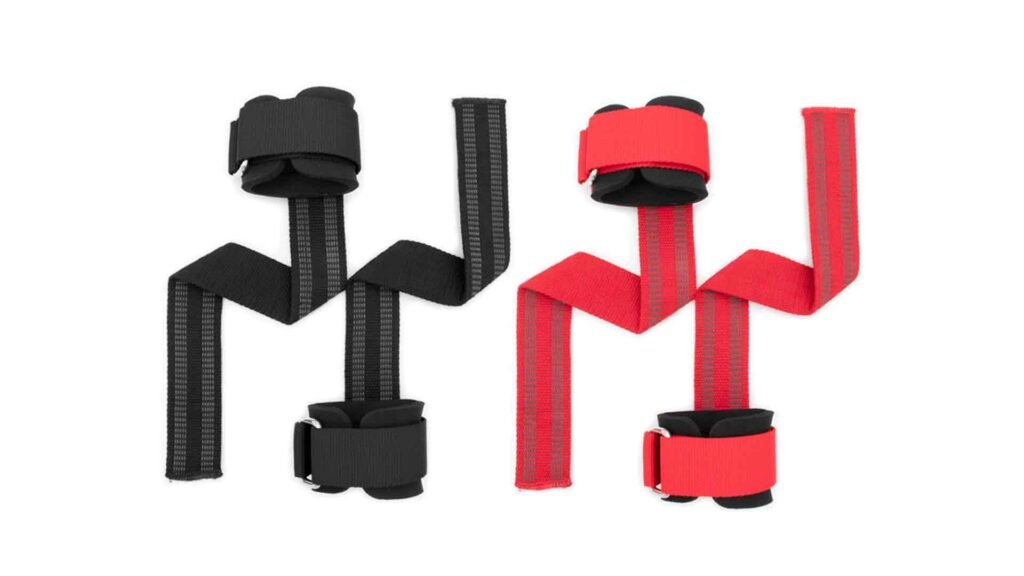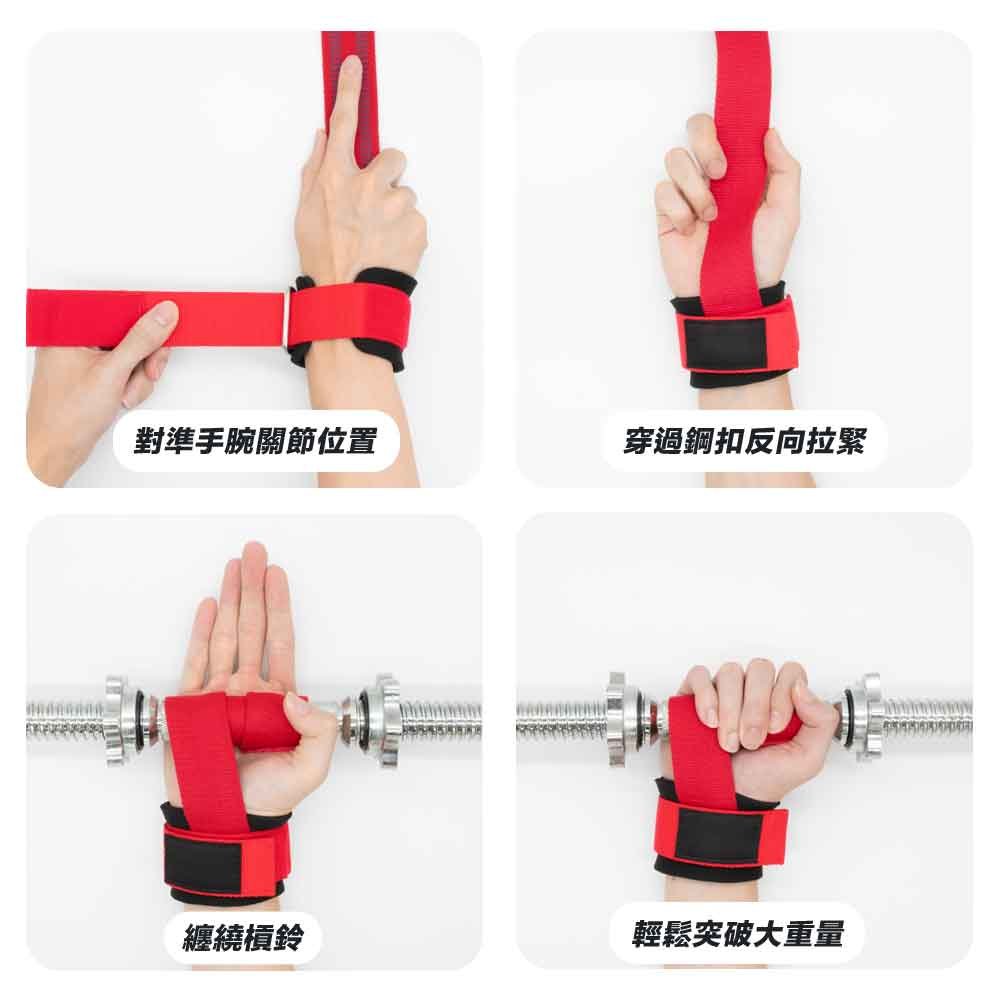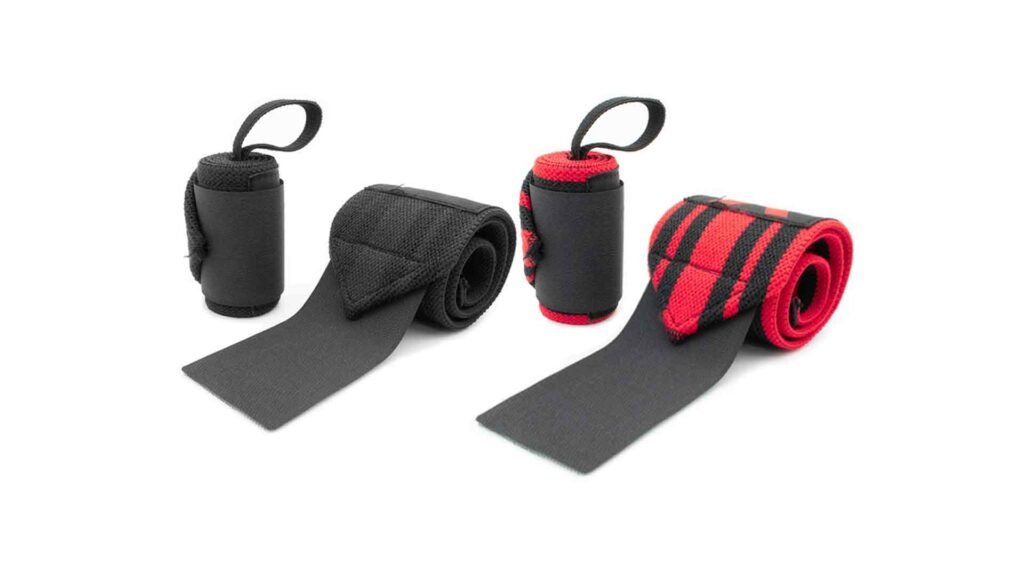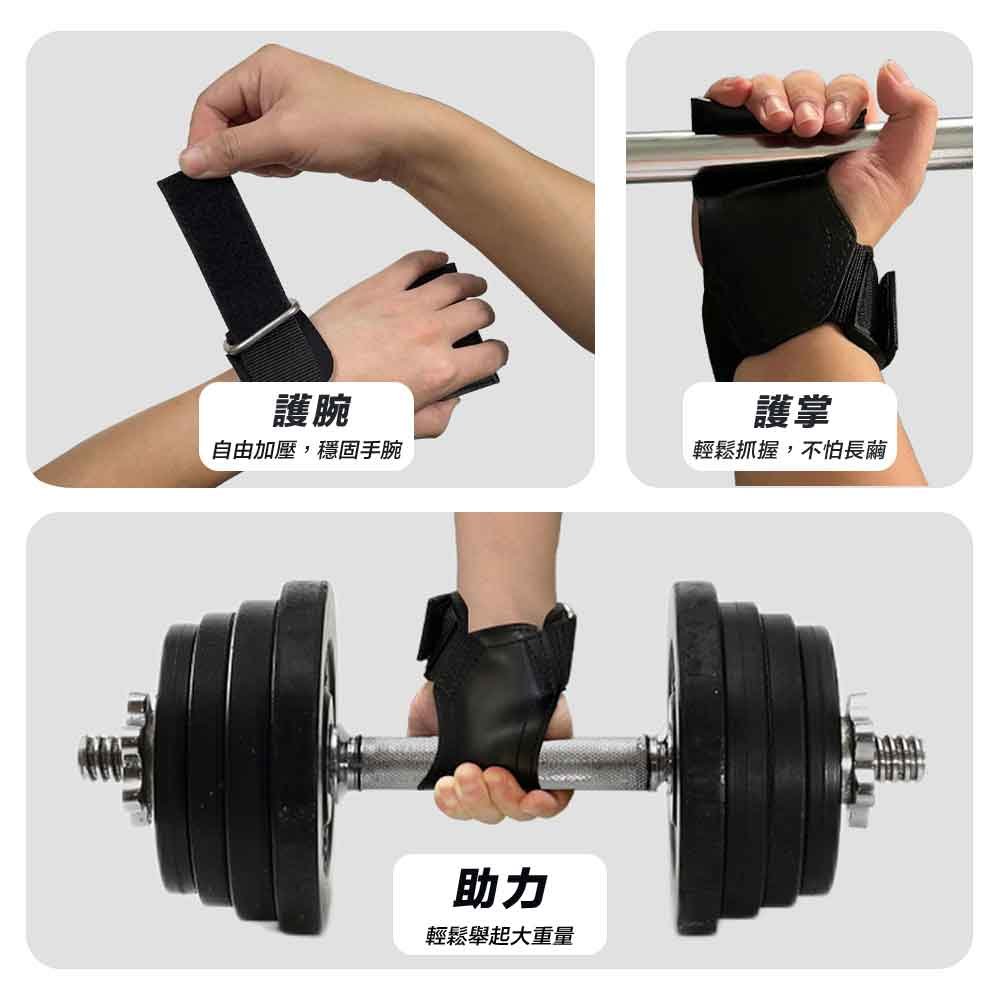
重量訓練(簡稱重訓)是一項增強肌肉力量和體能的運動,能夠有效提高體能、增強肌肉耐力和促進身體代謝。不過, 新手重訓 前要注意一些風險,尤其是在操作不當或忽略準備工作的情況下,可能導致受傷。因此,在開始重訓之前,有幾件重要的事情需要特別注意。
新手重訓 前必須注意的幾件事情
1. 充分熱身
在進行任何重訓動作之前,充分的熱身是必要的。熱身運動能夠促進血液循環,增加肌肉的彈性和活動範圍,減少受傷的風險。建議進行5-10分鐘的輕度有氧運動,如跑步、跳繩或原地踏步,然後進行相關肌群的動態拉伸,以激活目標肌群,為重訓做好準備。
2. 正確的動作姿勢
正確的動作姿勢是避免受傷並確保訓練效果的關鍵。在進行重訓時,應該了解每個動作的正確操作方法和注意事項。尤其是針對手、背部、膝蓋和肩膀等容易受傷的部位,務必確保姿勢正確,避免過度使用關節的力量來完成動作。若不確定動作姿勢,建議先向專業教練請教,或者使用輔助器材來保持穩定。
3. 逐步增加重量
初學者在重訓時應從輕重量開始,逐步增加負重,以避免肌肉和關節因為突然的高負荷而受傷。每次訓練都應根據自身的情況,合理地增加重量。過重的負荷不僅會影響動作的正確性,還可能造成肌肉和韌帶的過度拉伸或撕裂。
4. 正確的呼吸方式
重訓中的呼吸控制非常重要,正確的呼吸能夠提升動作穩定性和力量輸出。通常的做法是:在施力時吐氣,放鬆時吸氣。例如,進行硬舉時,當槓鈴向上拉時吐氣,放下槓鈴時吸氣。這樣的呼吸節奏有助於控制力量,同時保護核心區域。
5. 適當使用輔助工具
在重訓中,適當使用一些輔助工具可以提高訓練的效果,並降低受傷的風險。以下將介紹三款常用的輔助工具:傳統拉力帶、重量訓練護腕 以及 3 in 1 多功能拉力帶。
傳統拉力帶

產品特色
傳統拉力帶是一款經典的健身輔助工具,設計上以簡潔高效著稱。主要功能是增加握持力,使得使用者在進行拉力型動作時,如硬舉、引體向上和划船等動作,能更穩定地抓住器材。具有耐磨、抗撕裂和舒適的特點。
- 穩定的握持力:傳統拉力帶能夠有效減少手掌滑動,避免器材脫手。這對於提高重訓表現、增加訓練次數和重量都有顯著的幫助。
- 減少手掌疲勞:長時間握持重物可能會導致手掌疲勞,拉力帶可以轉移一部分負荷到手腕,減少手部的壓力。
- 簡單易用:操作簡便,適合初學者和專業健身者。
操作方式
將拉力帶繞在手腕上:首先將帶子的一端對準手腕關節位置,穿過鋼扣反向拉緊。
固定帶子在器材上:將另一端繞過槓鈴或其他設備,纏繞幾圈,確保緊密穩定。
調整並開始訓練:確保帶子固定好之後,就可以進行訓練動作。

重量訓練護腕

產品特色
重量訓練護腕是一種用於保護手腕的輔助工具,特別是在進行推舉或舉重動作時,能夠穩定手腕,避免過度彎曲或拉傷。護腕可以根據需要調整緊度,增加支撐力度。
- 保護手腕關節:護腕能夠限制手腕的過度活動,避免因為重量過大導致的扭傷或肌腱發炎。
- 提高動作穩定性:當手腕在訓練中保持穩定,使用者能更精確地控制力量輸出,避免姿勢錯誤。
- 舒適的佩戴體驗:護腕設計考慮了佩戴的舒適性,不會過度壓迫手部血管。
操作方式
調整護腕:將護腕穿過拇指套環,對準纏繞在手腕關節位置,順向拉緊加壓,調整到合適的緊度,確保佩戴時不會過鬆或過緊。
根據動作需要調整支撐:在進行大重量推舉時,護腕可以調得稍緊,以增加支撐力度。在進行輕量訓練時,可以稍微放鬆。

多功能拉力帶

產品特色
多功能拉力帶是一款集合多種訓練功能於一體的輔助工具,適合進行拉力、拉背訓練和一些重訓訓練。這種拉力帶通常有不同的阻力等級,適合不同強度的訓練。
- 多樣化訓練選擇:適用於多種訓練模式,如拉背、啞鈴、硬舉,壺鈴等訓練。可依據不同的訓練需求,選擇不同阻力的拉力帶。
- 輕便易攜:重量輕巧,便於隨身攜帶,非常適合在健身房。
- 適合不同階段使用者:無論是初學者還是高階運動員,都能找到適合自己的阻力等級。
操作方式
固定拉力帶:將拉力帶套在手腕上,穩固手腕,自由加壓。
進行訓練動作:拿啞鈴或者其他重訓等動作時,使用多功能拉力帶增加阻力,提升訓練效果。


重訓前的準備工作不容忽視,充分熱身、正確的動作姿勢、合適的重量、正確的呼吸和輔助工具的使用,都是保證訓練安全性和效果的關鍵。在進行重訓時,傳統拉力帶、重量訓練護腕 和 多功能拉力帶 等輔助工具能夠幫助使用者提高訓練效率,減少受傷風險。然而,應注意合理使用這些輔助工具,避免過度依賴,並在專業指導下進行訓練,以確保最佳效果和安全性。
閱讀相關文章:重量訓練3 in 1多功能拉力帶 助握倍力帶
推薦文章
Things to Pay Attention to Before Weight Training
Weight training (commonly known as strength training) is an exercise that enhances muscle strength and physical fitness. It effectively improves overall physical health, increases muscle endurance, and boosts body metabolism. However, weight training also carries certain risks, especially when done improperly or without adequate preparation, which can lead to injuries. Therefore, there are a few important things to consider before starting weight training.
1. Warm Up Properly
Warming up is essential before performing any weight training exercise. A good warm-up routine promotes blood circulation, increases muscle flexibility and range of motion, and reduces the risk of injury. It is recommended to engage in 5-10 minutes of light cardio exercises, such as jogging, jumping rope, or marching in place, followed by dynamic stretching that targets specific muscle groups to activate the muscles and prepare for training.
2. Correct Posture and Form
Maintaining the correct posture and form is key to avoiding injuries and ensuring effective training. During weight training, it is crucial to understand the correct execution of each exercise and the specific precautions. Special attention should be given to vulnerable areas such as the back, knees, and shoulders. Ensuring proper form will help prevent over-reliance on joints to complete movements. If unsure about the correct form, it is advisable to seek guidance from a professional trainer or use supportive equipment to maintain stability.
3. Gradually Increase Weight
Beginners should start with lighter weights and gradually increase the load to avoid muscle and joint injuries caused by sudden high-intensity exercises. Each training session should involve a reasonable progression of weight based on one’s physical condition. Excessive weight not only affects the correctness of the movements but may also lead to muscle and ligament overextension or tears.
4. Proper Breathing Techniques
Breathing control is very important during weight training. Proper breathing can enhance movement stability and power output. The general approach is to exhale when exerting force and inhale when relaxing. For example, during a deadlift, exhale when lifting the barbell upwards, and inhale when lowering it. This breathing rhythm helps control strength and protects the core area.
5. Appropriate Use of Supportive Tools
In weight training, the proper use of supportive tools can enhance training effectiveness and reduce the risk of injury. Below are three commonly used supportive tools: traditional T-shaped lifting straps, weight training wrist wraps, and 3 in 1 multifunctional resistance bands.




